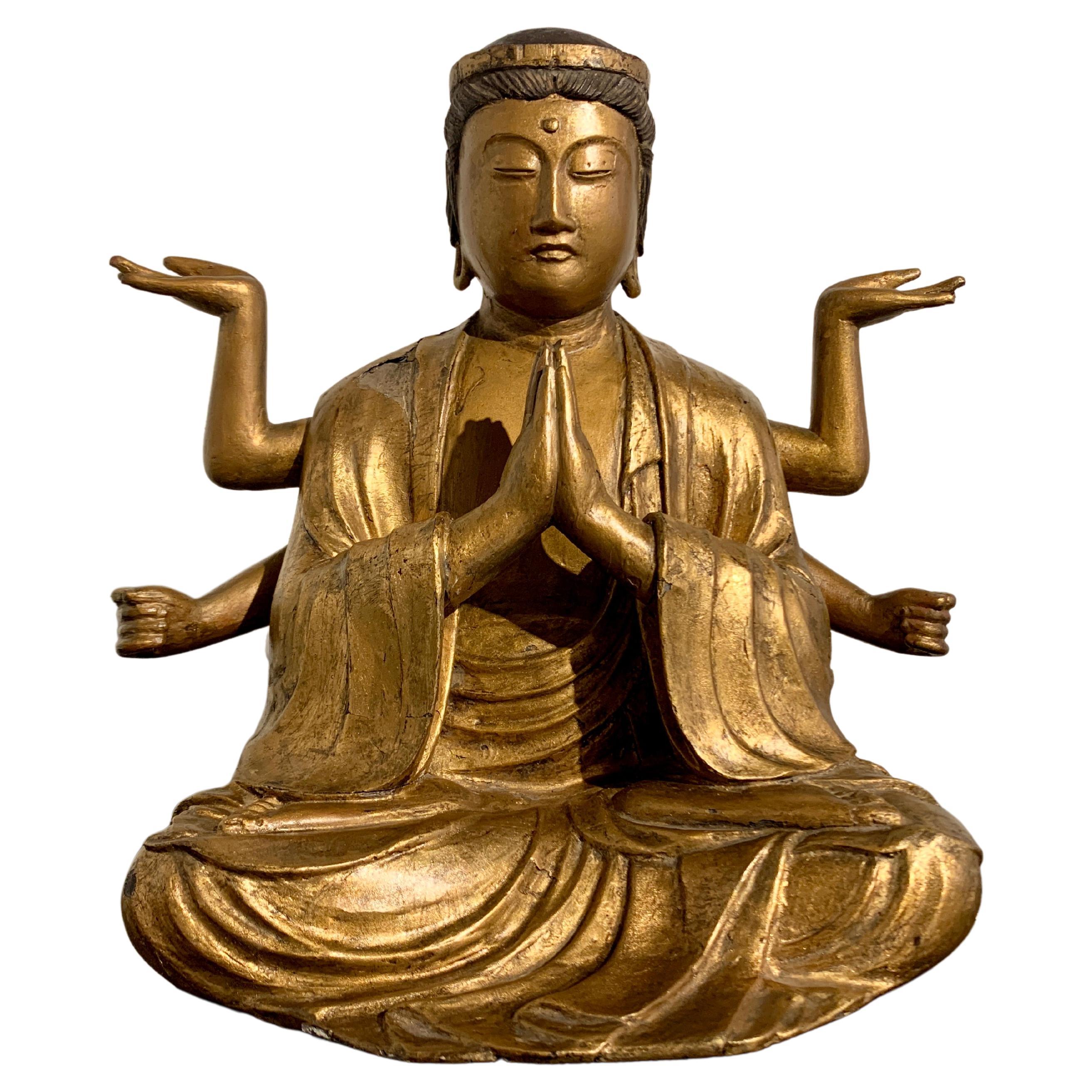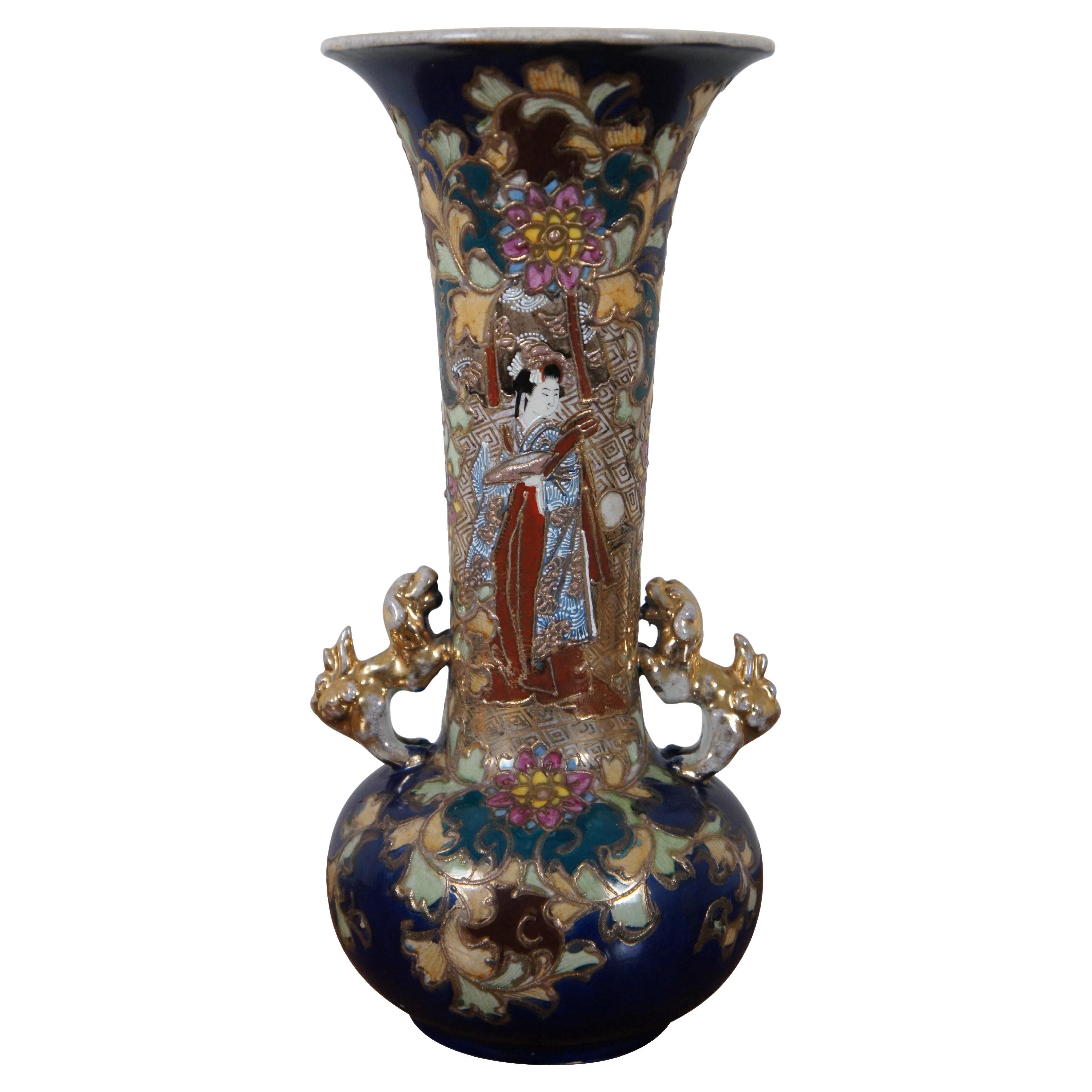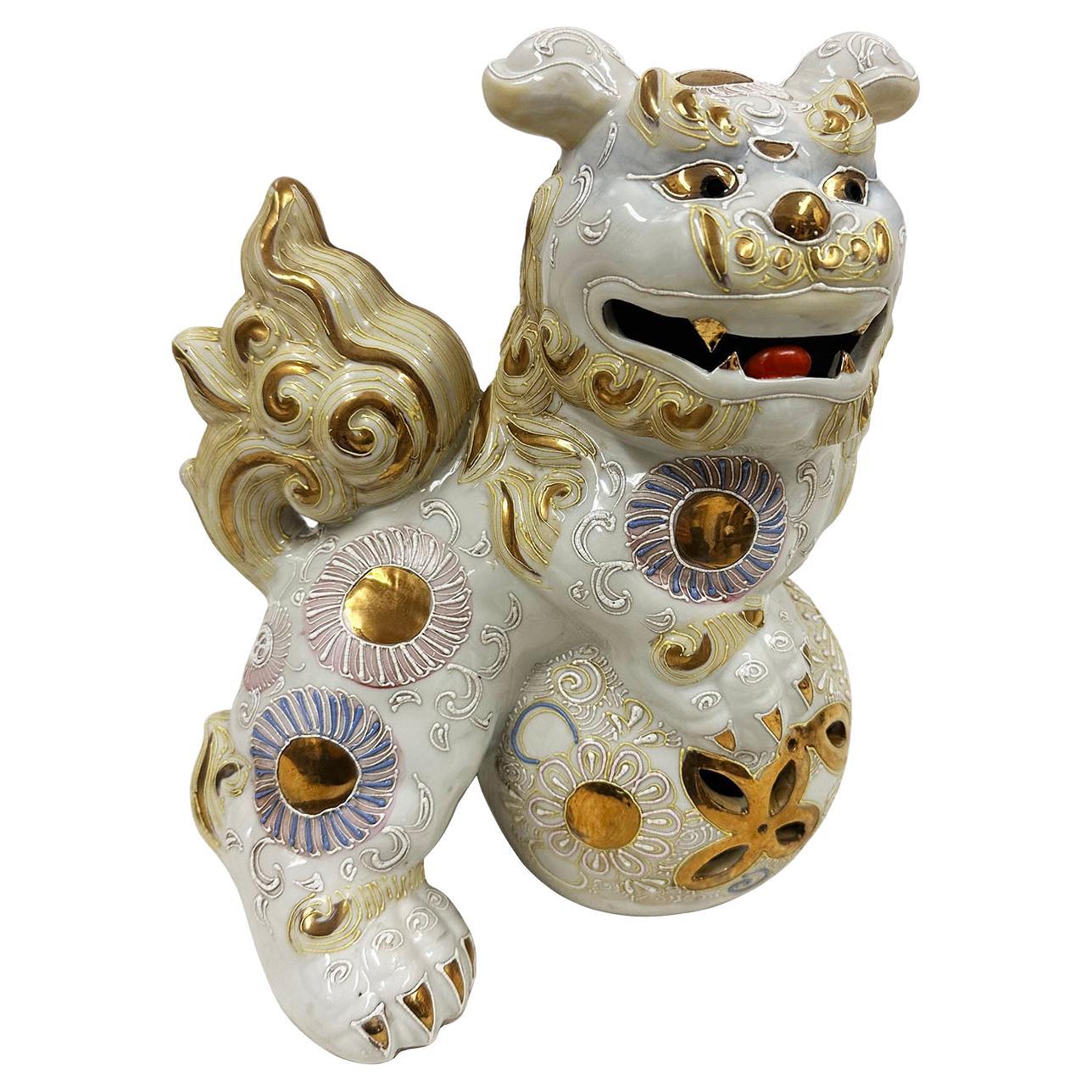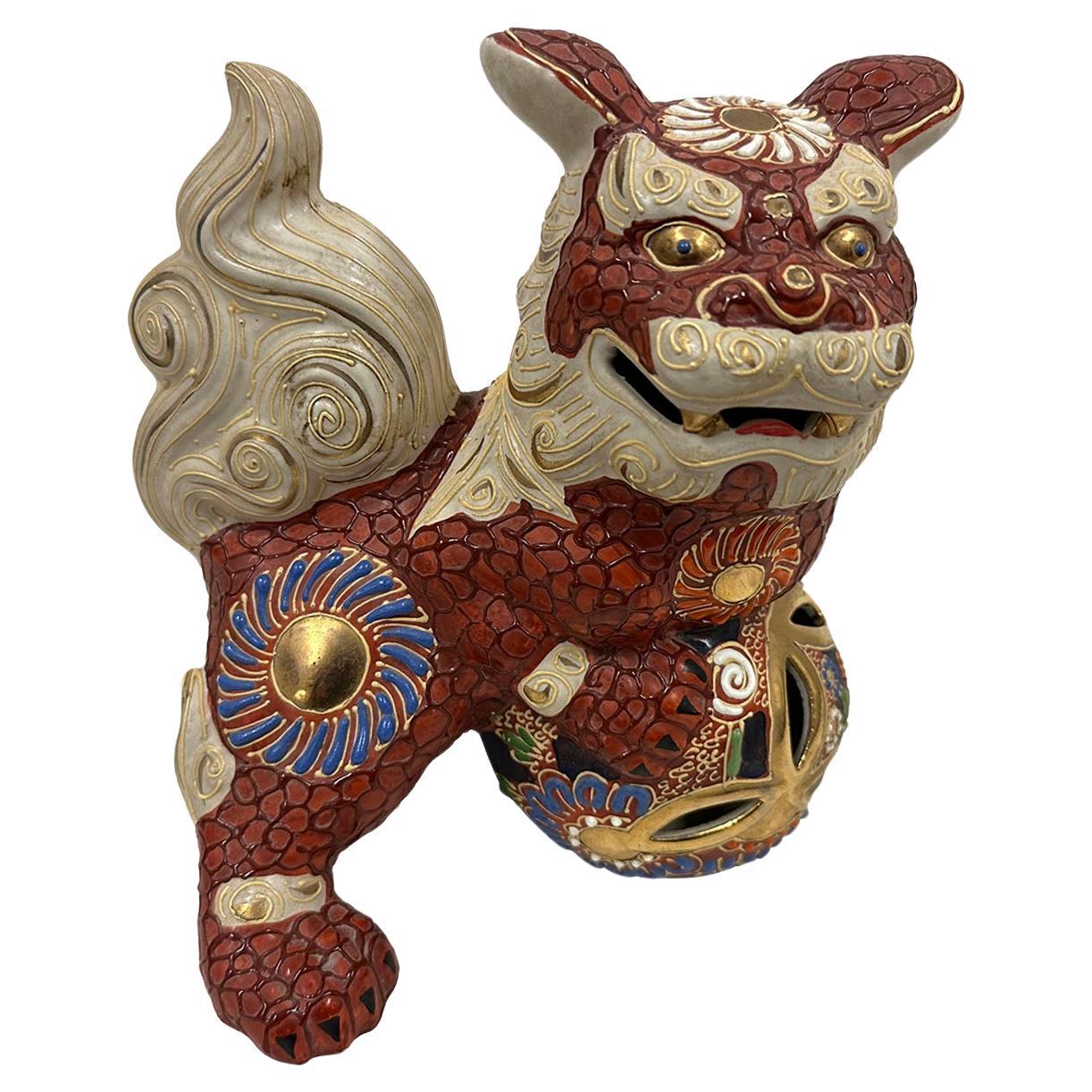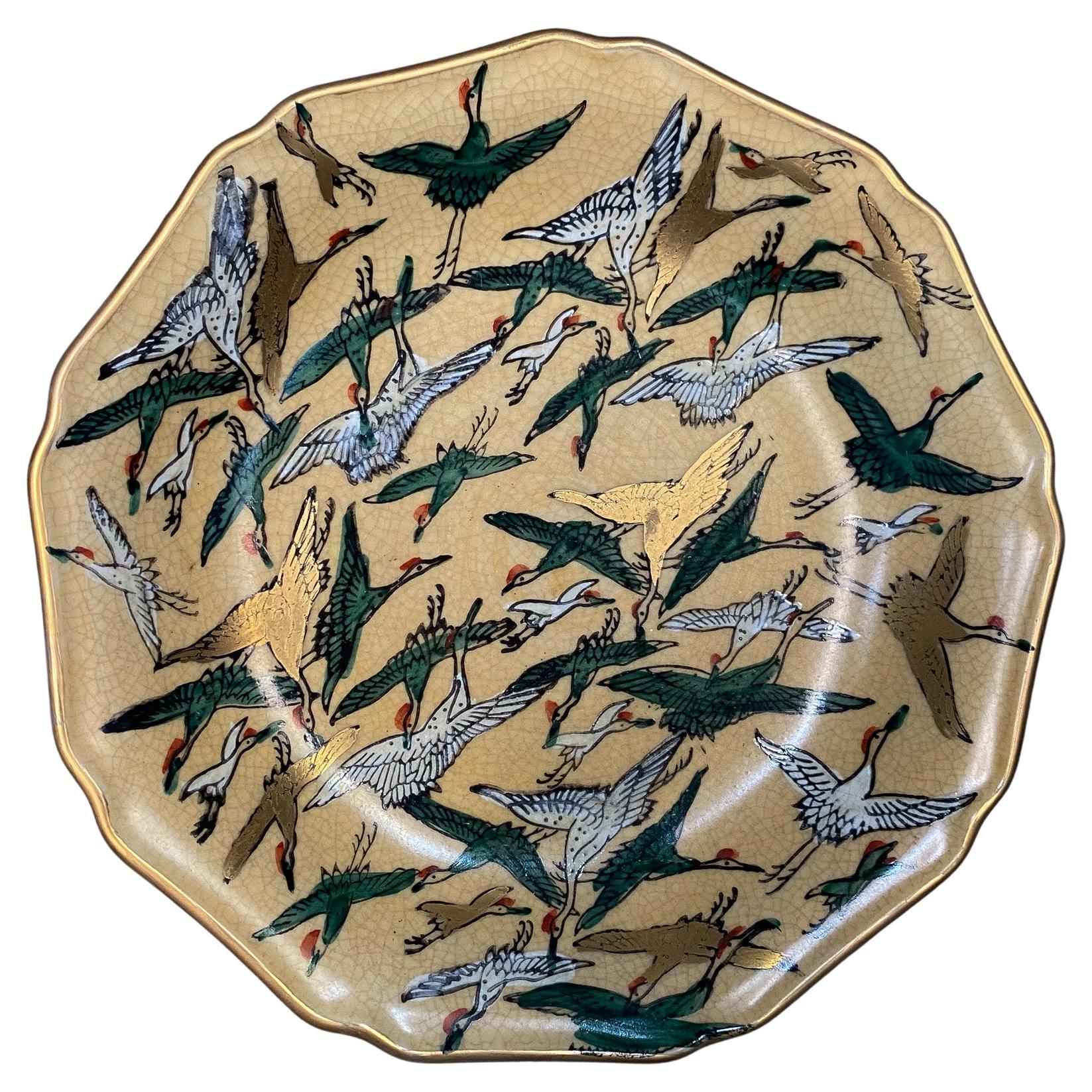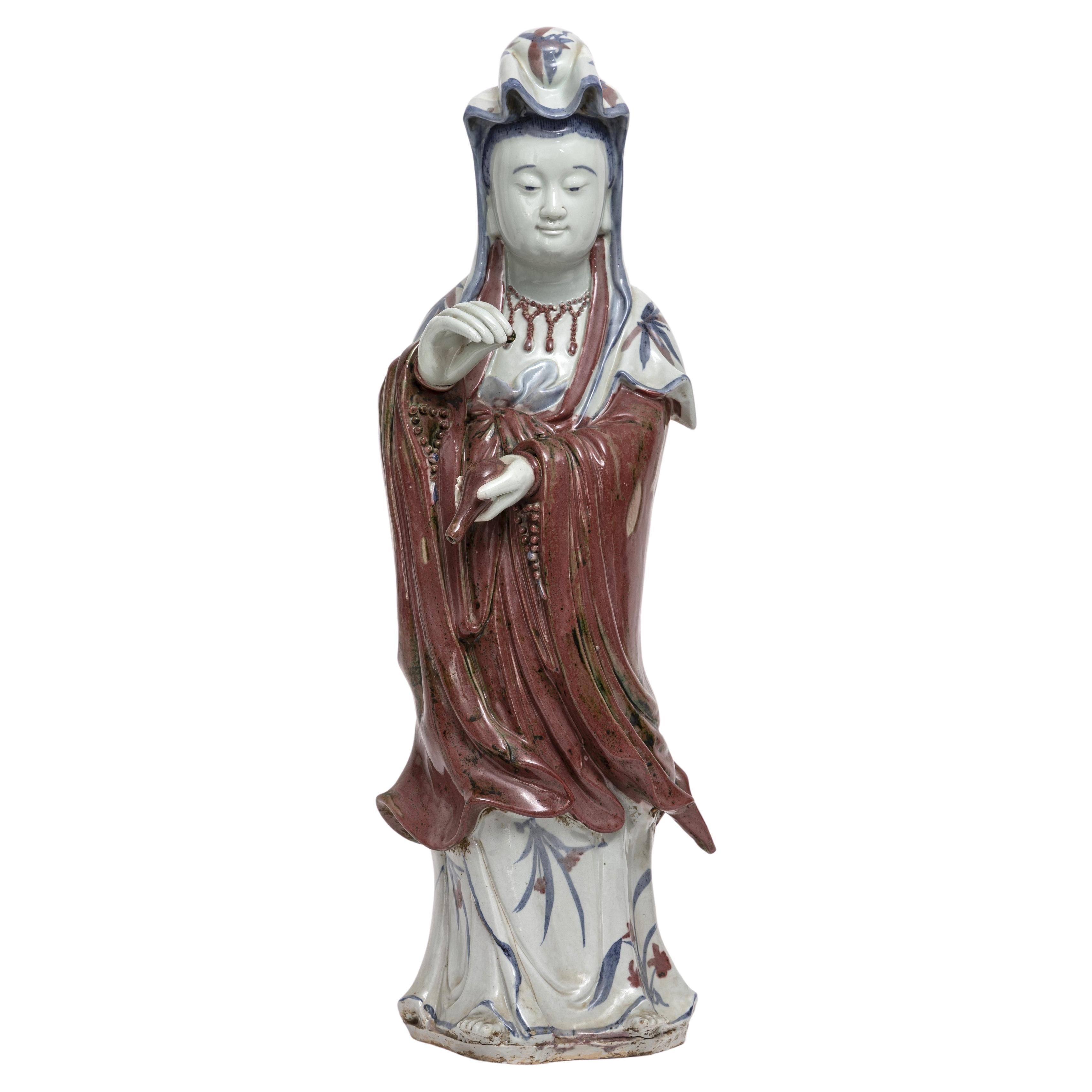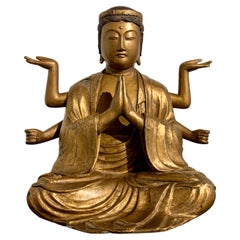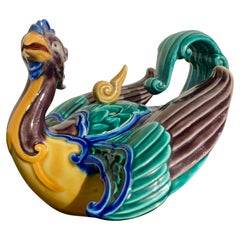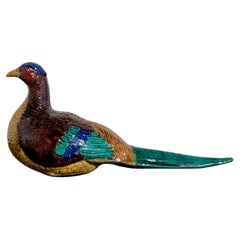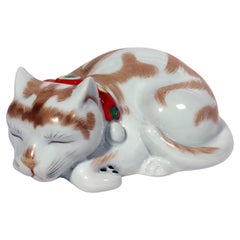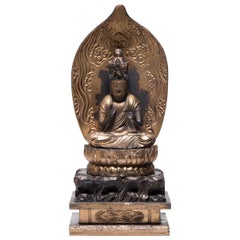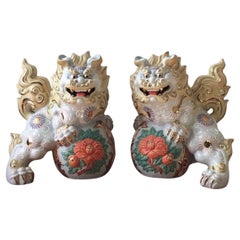
A Japanese Satsuma-Kutani Hybrid Style Figure of Kannon
View Similar Items
Want more images or videos?
Request additional images or videos from the seller
1 of 11
A Japanese Satsuma-Kutani Hybrid Style Figure of Kannon
About the Item
Her long flowing robes richly gilt and decorated in a floral and phoenix pattern of raised enamels. Her hands clasped in front of her holding a scroll. She wears a benevolent countenance, and directs her gaze downwards, watching the suffering of the world.
Signed by the artist.
- Dimensions:Height: 24.5 in (62.23 cm)Width: 9 in (22.86 cm)Depth: 9 in (22.86 cm)
- Place of Origin:
- Period:
- Date of Manufacture:Meiji Period (1868-1912)
- Condition:
- Seller Location:Austin, TX
- Reference Number:1stDibs: U110126894795
About the Seller
5.0
Platinum Seller
These expertly vetted sellers are 1stDibs' most experienced sellers and are rated highest by our customers.
Established in 2001
1stDibs seller since 2010
306 sales on 1stDibs
Typical response time: 1 hour
More From This SellerView All
- Japanese Gilt Wood Fukukenjaku Kannon, Meiji Period or Earlier, JapanLocated in Austin, TXAn attractive and esoteric Japanese carved and gilt wood figure of Fukukenjaku Kannon, Amoghapasa, Meiji period or earlier, Japan. Fukukenjaku Kannon is portrayed in an usual six...Category
Antique Early 1900s Japanese Meiji Sculptures and Carvings
MaterialsCypress
- Japanese Aote Kutani Phoenix Censer, Koro, Showa Era, JapanLocated in Austin, TXA fantastic Japanese Aote type Kutani incense burner, koro, in the form a phoenix, Showa era, circa 1930's, Japan. The censer, koro, gracefull...Category
Vintage 1930s Japanese Showa Ceramics
MaterialsPorcelain
- Japanese Kutani Pheasant Sculpture, Okimono, Showa Era, Early 20th CenturyLocated in Austin, TXA spectacularly glazed Japanese Kutani model, okimono, of a pheasant, Showa era, early 20th century, Japan. The okimono, or decorative sculpture, in the form of a magnificent phea...Category
Vintage 1930s Japanese Showa Ceramics
MaterialsPorcelain
- Japanese Kutani Porcelain Figure of a Geisha or Bijin, Showa Era, 1930's, JapanLocated in Austin, TXA lovely Kutani porcelain model of a beautiful woman, bijin, or perhaps a geisha, Showa era, circa 1930's, Japan. A charming and delightful Japanese Kutani enameled porcelain figure of a bijin or geisha, early Showa Era, circa 1930's, Japan. The elegant figure of a beautiful woman, called a bijin, or perhaps a geisha, is portrayed dressed in full kimono and holding a closed folding fan in one hand. Her kimono of a rich and deep blue hue, with images of plump pomegranates in gilt. Her wide obi of a striking red color, and patterned with branches of pink blossoms. One foot, clad in a white tabi...Category
Vintage 1930s Japanese Showa Sculptures and Carvings
MaterialsPorcelain
- Japanese Kutani Porcelain Figure of a Bijin or Geisha, Showa Era, 1930's, JapanLocated in Austin, TXA charming and delightful Japanese Kutani enameled porcelain figure of a bijin or geisha, early Showa Era, circa 1930's, Japan. The elegant figure of a beautiful woman, called a bijin, portrayed dressed in full kimono and holding a fan in one hand. Her kimono of deep black with scattered cherry blossoms in white and outlined in gilding. Her wide obi of coral color, and patterned with stylized clouds of turquoise green and puce. One foot, clad in a white tabi...Category
Vintage 1930s Japanese Showa Sculptures and Carvings
MaterialsPorcelain
- Khmer Style Bronze Figure of a Standing Buddha, Mid-20th Century, ThailandLocated in Austin, TXA lovely vintage Khmer style cast and patinated bronze figure of a standing Buddha, mid-20th century, Thailand or Cambodia. The Buddha is portrayed standing upright upon a low, p...Category
Mid-20th Century Thai Sculptures and Carvings
MaterialsBronze
You May Also Like
- Japanese Kutani Porcelain Figure of a Sleeping CatBy Kutani StudioLocated in Downingtown, PAJapanese Kutani Porcelain Sleeping Cat Figure, Meiji Period, Circa 1910-20 The porcelain model of a cat depicts a cat naturalistically modeled with its paws beneath it and it tail f...Category
Early 20th Century Japanese Meiji Animal Sculptures
MaterialsPorcelain
- Japanese Gilt Seated Kannon Figure, circa 1850Located in Chicago, ILIntricately carved and finished with gilt black lacquer, this seated figure depicts the bodhisattva Guanyin, known in Japanese Buddhism as Kannon. Described as the "Buddha of Infinite Compassion," Kannon is the embodiment of mercy and makes himself available to all who call upon him with all their mind. Kannon is depicted here seated in diamond position upon a double lotus plinth, set above a stepped base. He is dressed in gracefully draped robes and wears a tall crown bearing a minuscule figure of Amida, the Buddha of Infinite Light. He has a serene expression of calm and holds his right hand in the abhaya mudra, a gesture of comfort, blessing, and protection. Backed by a magnificent leaf-form nimbus, this Kannon figure...Category
Antique Mid-19th Century Japanese Edo Sculptures and Carvings
MaterialsWood, Lacquer
- Pair of Japanese Satsuma Kutani Porcelain Foo Dogs Sculptures/FigurinesBy SatsumaLocated in W Allenhurst, NJThis is a pair of Japanese Satsuma Kutani porcelain Foo Dogs. They are hand painted white and adorned with gilt and silver suns, flowers and scrolls. Both of them are playing with a ...Category
Vintage 1970s Japanese Chinoiserie Animal Sculptures
MaterialsPorcelain
- Japanese Polychrome Standing Shō Kannon Figure, circa 1900Located in Chicago, ILThis late 19th century standing figure depicts the sacred form of the bodhisattva Guanyin, known in Japanese Buddhism as Sho Kannon, or Guze Kannon. ...Category
Antique Late 19th Century Japanese Edo Sculptures and Carvings
MaterialsWood
- Antique Japanese Meiji Era Porcelain Satsuma Figural Kutani Vase Fu Dogs GeishaLocated in Dayton, OH"Late Meiji era Kutani vase, circa 1903. A beautiful porcelain blue ground centered by an intricate Geisha flanked by gold figural Foo Dog handles. Features a floral and foliat motif throughout. Signed along the base. Kutani ware, Japanese porcelain made in Kaga province (now in Ishikawa prefecture). The name “Old Kutani” refers to porcelain decorated with heavily applied overglaze enamels and produced in the Kaga mountain village of Kutani. The powerful Maeda family had established a kiln there by 1656. The clay bodies used were gray and coarse-grained. On most pieces—dishes and bowls were especially common—a white or blue-white matte glaze was decorated in dark, restrained colours, initially greens, yellows, and some reds, and later purples and dark blues. Some items had cobalt blue decoration under a white glaze. The most noted Old Kutani pieces are “Green Kutani,” in which most of the surface is covered in a green or blue-green glaze to which one or two colours have been added (or the glaze is applied evenly over a design executed in black). The bold designs of Kutani ware drew freely from Chinese ceramics, paintings, and textiles. They are renowned for their rich pictorial ornament executed in lively, intense lines. Owing to local financial problems and difficulties in obtaining the necessary pigments, the Kutani kiln was abandoned some time in the Genroku period (1688–1704). Ceramics production in Kaga enjoyed a renaissance early in the 19th century, however, including the establishment of another kiln at Kutani in the 1820s. In addition to a revival of the styles of Old Kutani ware, there arose a style using gold on a coral-red ground, which was perfected during another spate of activity that began in the 1860s. Technical advances were made and Western-style pigments were adopted, and by the 1890s modern Kutani...Category
Antique Early 1900s Meiji Vases
MaterialsPorcelain
- Vintage Japanese Kutani Porcelain Foo Dog TOYO Made in JapanLocated in Pomona, CAThis fine Vintage Japanese Ceramic/Porcelain Lion/Foo Dog Statuary was hand crafted by Kutani in Japan. It has beautiful color glaze with gilt and detailed carving works shows this happy foo dog is playing with ball. It also called Shi Shi Foo Dog...Category
Early 20th Century Japanese Anglo-Japanese Animal Sculptures
MaterialsPorcelain




